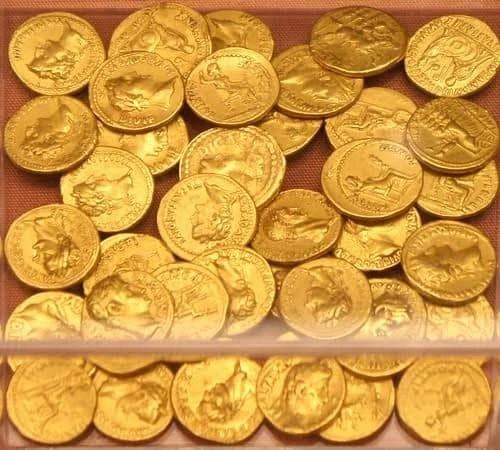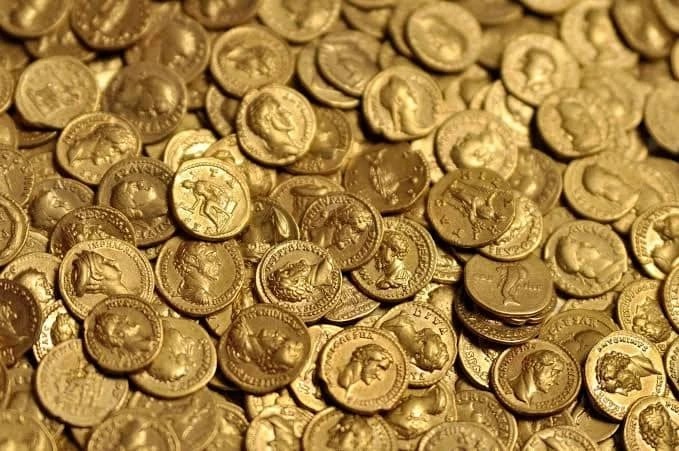Unveiling History: In 1911 CE, 160 Aureus Coins were found beneath a Roman house in Corbridge.

In 1911 CE, a remarkable archaeological discovery unfolded beneath the floorboards of a Roman house in Corbridge, revealing a hidden cache of 160 aureus coins. This extraordinary find offers a tantalizing glimpse into the economic and social fabric of Roman Britain, shedding light on the commercial activities and wealth of the region during the ancient era.
The discovery, made during excavations at the site, underscored the significance of Corbridge as a bustling Roman settlement situated along the northern frontier of the empire. The presence of such a substantial number of aureus coins suggests the prosperity and economic activity that characterized the area during Roman rule.

Aureus coins, crafted from precious gold, were among the most valued forms of currency in the Roman world. Minted with exquisite craftsmanship and bearing the likenesses of emperors and symbols of imperial power, these coins served as a tangible representation of Rome’s authority and influence.

The circumstances surrounding the deposition of these coins remain a subject of scholarly debate. Some speculate that they may have been hidden away for safekeeping during times of instability or conflict, while others suggest they were intentionally placed beneath the floor of the house as an offering or act of reverence.
Regardless of the exact reasons for their placement, the discovery of the aureus coins provides invaluable insights into the economic activities and social dynamics of Roman Britain. These coins would have circulated among merchants, traders, and residents, facilitating transactions and exchanges that fueled the local economy.